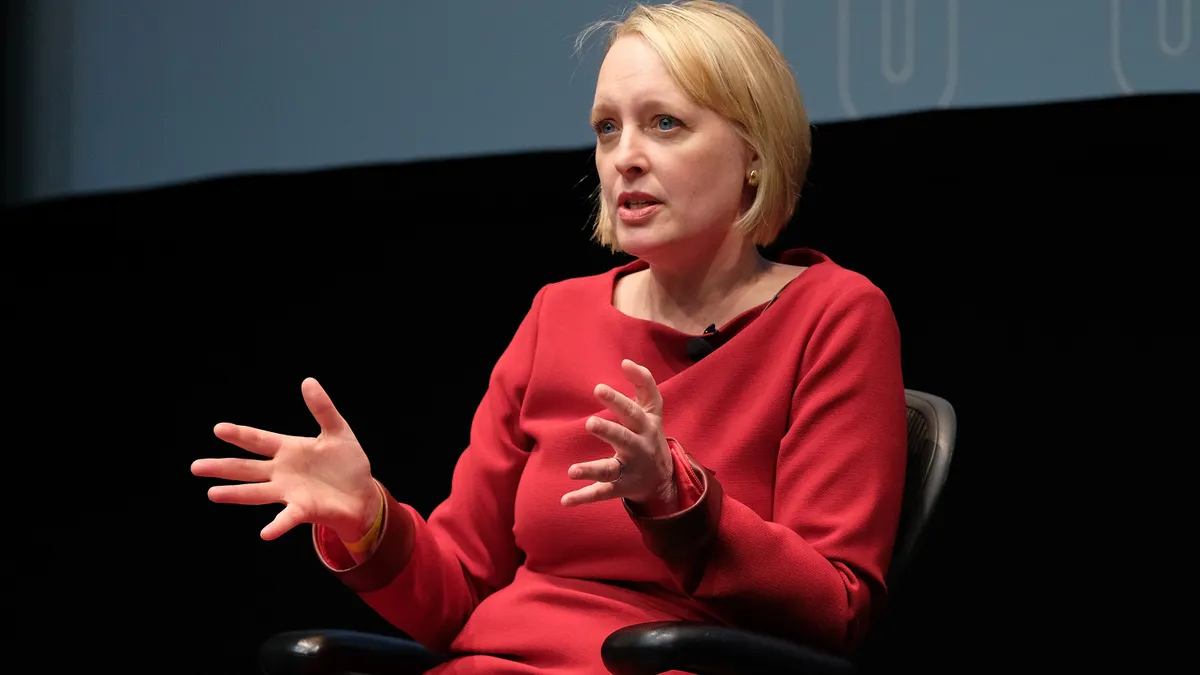With new work models have come new work challenges. Early on, employers ‘fessed up to remotely monitoring employees — chiefly in the name of productivity. Leaders told Digital.com in 2021 that they’d taken note of more than half their employees spending hours away from their workstations or off-task. In the same survey, 81% said productivity improved after employing said software.
Remote monitoring crept back into the news in February with Aware, a firm that analyzes employee messages using artificial intelligence. The tool scours anonymized messages to see how certain demographics within a company are responding to new workplace policies or initiatives. Companies that allegedly use Aware include Chevron, Delta, Starbucks and T-Mobile.
Buzz about Aware may expand the public’s idea of use cases for such software beyond productivity monitoring. But conversations around employee surveillance also brings to the forefront the need to communicate effectively with workers to restore trust.
How does employee monitoring work?
Some software records keystrokes; some similar technology analyzes time and attendance data. Aware, for example, has Slack, Microsoft Teams and Workplace from Meta integrations. “Move beyond legacy systems to a more accurate, secure, and real-time workflow with our AI data platform. Get started in minutes,” the Aware website reads.
Use cases for this software in particular are legal compliance, security and employee experience, including what Aware developers call “toxic speech.”
Slack and Teams provide aspects of employee monitoring. Per its website, Slack collects data points such as:
- Employee email addresses and passwords, phone numbers, and payment information
- Employee location, pinpointing a worker’s physical location; websites visited before opening Slack
- Third-party tools integrated into Slack
- Huddle metadata
Similarly, Microsoft Teams’ data collection, as reported by Wired, includes:
- Employee email addresses, profile pictures and phone numbers
- Employee messages, and calls and meetings that each worker has attended
- Employee census data
- Files shared in meetings, and recordings and transcripts of meetings
As some experts previously told HR Dive, sometimes software takes random work device screenshots.
Why do employers use remote monitoring software?
A quick search of “employee monitoring software” and “security” turns up myriad vendors. Proponents tout the fact that breaches of both employee information and customer data often stem from the “human element” of cybersecurity practices.
More than security and compliance, however, productivity monitoring is the main focus of these employee surveillance conversations.
Since 2020, employees have seized on remote work as a boon of lockdown. And as recently as 2023, workers have continued to prioritize flexibility, saying as much to pollsters. Workers have demanded the option to work remotely, on their own terms, and have even quit if that’s not the case. See: The great resignation.
As employers concede to hybrid work, leaders have felt the need to keep an eye on workers through employee surveillance software.
One report in 2021 suggested early on that most companies had installed remote monitoring software. Still, only 14% had notified their workforce that this was the case.
Studies and workplace advocates suggest, however, that remote monitoring may actually cause more harm than benefit: 40% of workers in a Glassdoor survey said that employer monitoring makes them less productive. But unclear communication can only add to the issue; more than a third of respondents told Glassdoor they weren’t even sure if they were being monitored in the first place.
15Five, a “holistic performance management company,” released a report in 2023 saying that employee monitoring — naming Slack and Teams data-gathering, and webcam surveillance, for example — is “ineffective and damaging.” Nearly 70% of managers said it improves performance, but more than 70% of employees said that surveillance either diminished their productivity or had no impact.
How monitoring may be counterproductive
While remote monitoring may allegedly help with attrition, according to developers like Aware, the very notion of productivity-related monitoring taking place may push workers away. (HR Dive reached out to Aware and its co-founder and CEO Jeff Schumann; a spokesperson responded that Aware is not currently taking interviews.)
While 45% of managers told 15Five that remote surveillance improves worker well-being, only 24% of employees agreed.
In another 2021 report, the majority of IT managers polled by digital workplace vendor 1E about remote monitoring said it created worker anxiety and burnout.
Earlier this year, Forbes’ Internet Surveillance in the Workplace report found that the workplace tug-of-war remains:
- Almost half (43%) of workers said their bosses monitor their online activity.
- About 4 in 10 said that the surveillance negatively affects their relationship with their employer, and a similar rate of workers said it affected company morale.
- More than half voiced “ethical concerns” around employee monitoring in general.
The question of privacy laws and trust
As an attorney previously told HR Dive: The U.S. takes a “notice” approach vs. a “consent” approach to privacy rights.
Legally speaking, that “notice” can be given through an employee handbook or a work device log-in screen, the attorney said. Personal email and private social media raise, instead, more ethical questions. And while employees largely cannot be compelled to give over a password to a private social media account, if an employee accesses personal accounts on a company device, it’s highly likely an employer would run into little legal issue monitoring that activity.
Overall, experts have expressed concern about the intentions behind remote monitoring. An employee tech exec previously told HR Dive that some managers may use productivity tracking software as a “shortcut” for effective leadership. Instead, he suggested equipping managers with the tools to create psychologically safe workplaces.
HR Dive reached out to WorkJam and Workplace from Meta for insight into the software company’s Aware integrations, and they could not respond in time for publication.
Given the common inclusion of Teams in remote monitoring software conversations and its Aware integration, HR Dive also reached out to Microsoft regarding positive use cases for the software. A spokesperson for the tech company said, “Microsoft has nothing to share at this time.”
Similarly, HR Dive reached out to Slack for insight into its Aware integration, common employer use cases, and best practices for communication around remote monitoring — particularly around maintaining positive employer-worker relationships. A spokesperson for Slack said they didn’t “have anything else to add” to the story.























